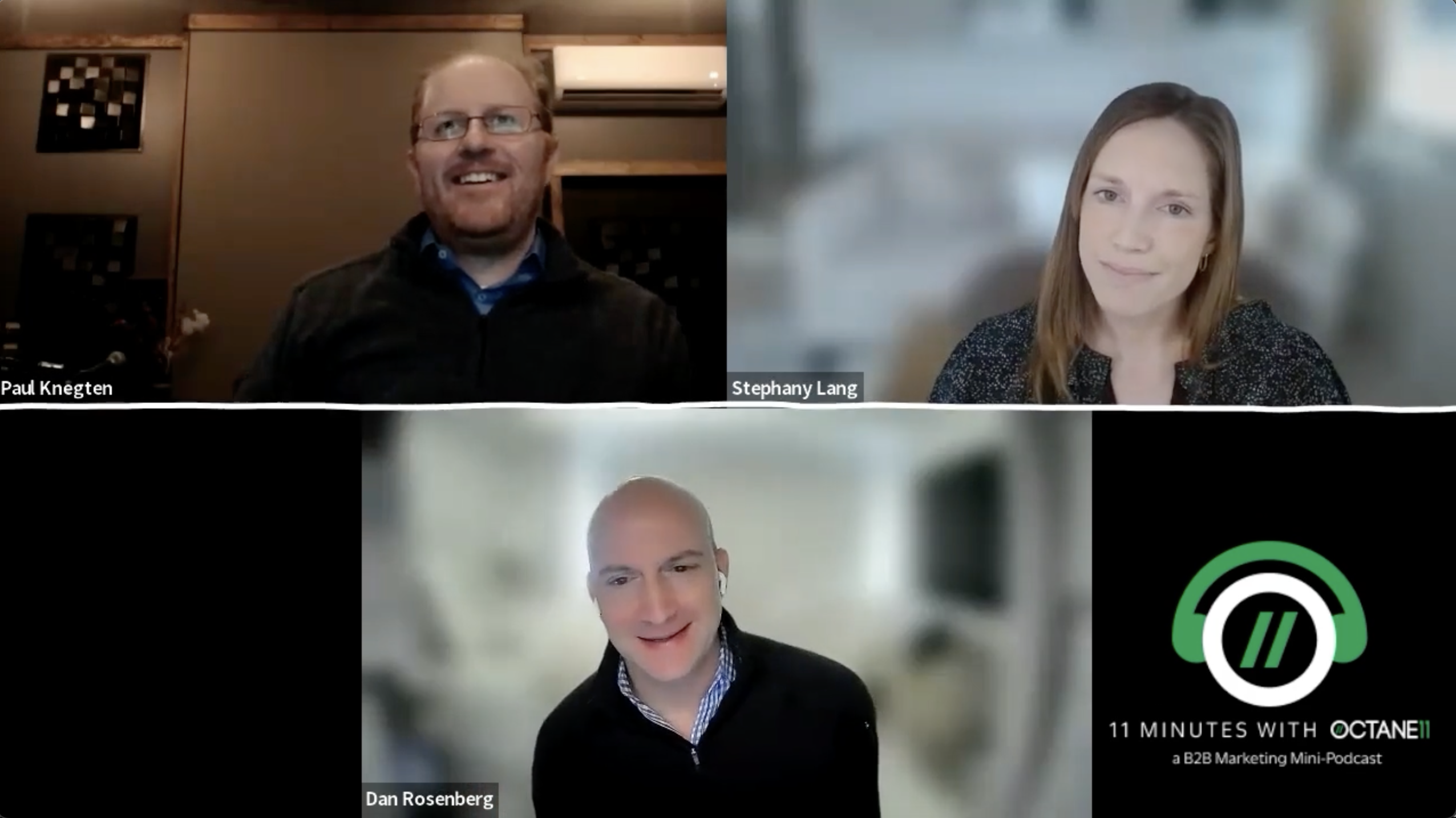The parable of the “Blind Men and the Elephant” is a visceral parable about the power of perspective. It is also quite relevant for B2B marketers for both how they tell the story of their business and for how they execute their own marketing tactics.
If you haven’t heard it before, the story goes something like this – 6 blind men who have never encountered an elephant before are confronted with one in the wild. Each man touches a different part of the elephant – a tusk, ear, trunk, leg, belly, tail – and thinks he has come across something completely different – a spear, fan, snake, tree, wall, rope. There are many lessons here from the importance of seeing the big picture to collaborating across teams and understanding how the parts make up the whole.
So what does this have to do with B2B marketing?
First, B2B marketers need to tell their story at both the elephant level and the tusk/ear/trunk/etc level. That is, you need to describe the overall vision value proposition of the company, but you also need to describe the individual pillars and features that support the big picture. Many marketers focus too much on one or the other, but you really need both. The elephant-level “messaging” is ideal for brand awareness, broad audiences and senior decision-makers, but it won’t be compelling unless you can get into the details especially for user-buyers. Meanwhile, feature-level storytelling is critical for buyers that want to get into the weeds, but will fall short if you don’t connect those features to the bigger picture, present the wrong feature to the wrong audience, or fail to highlight some features altogether.
So, as you plan your content calendar for the year, here are some questions you need to ask: Are you spending enough time explaining both the elephant and feature altitude? What are the main aspects of the business that you need to promote? Are they all accounted for in your plan? When you describe these aspects, are you connecting them back up to the bigger picture? Are you mapping the various aspects of your business to the right audiences (eg. different roles or departments within your target accounts)?
Second, B2B marketers can also think of their own marketing stack as an elephant with multiple tactics and channels playing the part of the tusk/ear/trunk/etc. All of the tactics should be activated or at least considered every time – and they should all work together to drive maximum impact. When marketers fail to use all of the tools at their disposal or fail to use them all in concert, they’re leaving a ton of value and impact on the table. Unfortunately, we see this all the time: marketers running an isolated “email campaign” or an “ad campaign” when they should be taking advantage of the great content they’ve developed by running a multi-channel campaign that creates maximum leverage across all touchpoints
So, when you’re planning your next campaign or your calendar for the year, make sure you ask yourself: What are my most powerful tools and tactics? Which tactics work best for specific audiences and goals? How can I activate as many tactics and channels as possible for every campaign? How can I track not only the efficacy of each channel on its own, but also as part of the campaign as a whole?
The main takeaway from the elephant parable is to consider multiple perspectives and integrate them into the whole. This all may sound like a significant challenge for B2B marketers given the complexity of digital and the pressure to execute – but it’s simply a framework for driving more leverage from the work you’re already doing. The good news is that there are also a growing number of tools and partners that can help you get ramped up on this approach quickly – including of course Octane11.
Drop us a line if you want to learn more about how our software and services can help you get better results with less effort – or chat with us at www.octane11.com.





